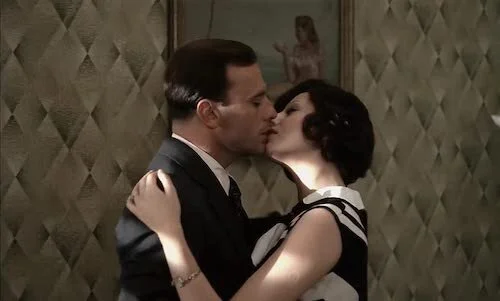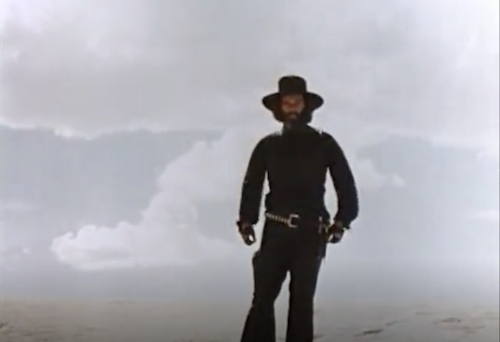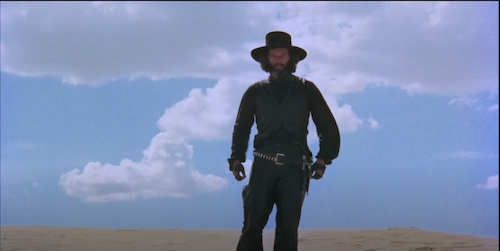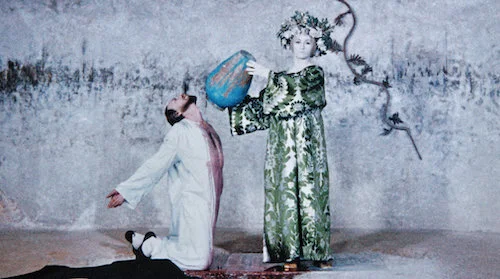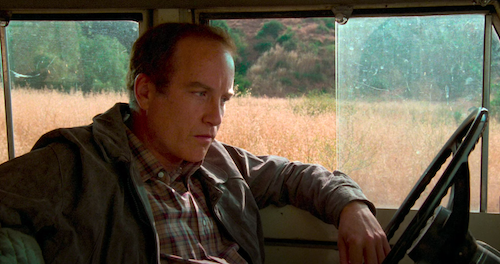How Much Can Digitally Remastering a Film Change a Film Experience?
The Conformist
Obviously, 4K movies have been the talk of the town for a really long time now, and it was far from the first discussion of this nature. Before it was blu rays, and before that it was DVDs. Ever since the home film circuit began with VHS (well, LaserDisc, really), the quest for the remastered film began. We can watch these at home now. So, how good can they be while we are at home? Luckily there are many companies devoted to not just digitizing films for consumer consumption, but are committed to preserving these films as well. These include The Criterion Collection, Arrow Films, Vinegar Syndrome, and more. With online streaming being a popular option for film viewing, the evolution of film care has never been so rapid and accessible to the masses.
I’m writing today to question how much does remastering a film affect the experience of said film. I don’t mean would it look better. In most cases, digitally enhancing a film will better it in almost every way on a technical level. I mean how much does the legacy of a film depend on the better quality versions being released. Just because a film you watched on the Criterion Channel from the ‘60s looks like it was made yesterday, doesn’t mean that’s the same experience original audiences had. Just to give you some perspective, here is a screenshot of a projector copy of Alejandro Jodorowsky’s El Topo found on Archive.org (this is what cinemas were given to project; account for deterioration, damage, and other factors that were developed over time).
El Topo digitized as a found copy and left as is on archive.com.
Now here is the exact same moment found in a trailer for the 4K release of El Topo.
El Topo remastered for a 4k release.
Wow. That’s some magic right there. However, the remastering of films is a case-by-case scenario. Was the damaged, deteriorated copy of El Topo used from Archive.org the same copy that was digitized for 4K release? I would bet big money that it wasn’t. A better copy — perhaps even a master copy, or some sort of protected copy — was likely the starting point of this project (if not multiple copies with their best preserved parts stitched together digitally). So, the first point is to know how well kept the original film was. Was it something like Jaws, which would never be lost in any way by the film industry or society? Or, was it a film that was censored and banned, and left to rot in a basement or closet somewhere? Jaws was protected from the very beginning (and part of this is due to the quest of high profile directors at the time to find better means of preserving films, since Eastmancolor prints of films at the time were turning pink after a certain number of years).
Not everyone is Spielberg, though. Many films that are celebrated now were maybe chastised upon release. Some weren’t even given a chance at all. The best copies of some films are completely damaged beyond repair, and there’s only so many miracles that digital remastering can do (although the current capabilities are still astounding). With that in mind, the current best versions of some films won’t compare to films that have had a better preservation timeline, since much less work has to be done with those overall. Should this still affect the experience of a film?
I find Sergei Parajanov’s The Color of Pomegranates to be a stellar example here. This film was banned from release outside of Armenia by the State Committee for Cinematography in Russia. Even once the ban was lifted, the film didn’t fare well in general, having been given up on by distributors from the start. Now, it is cherished as an abstract masterpiece. The Criterion Collection has released their remastering of the film. Considering the work done, their copy is extraordinary. However, The Color of Pomegranates still appears maybe less current visually for a number of reasons: how it was shot, how it was shown, and how it was preserved. Then again, with all of that in mind, it remains one of cinema’s most visually masterful artworks.
The Color of Pomegranates
The Color of Pomegranates survives in this way through conception, and Parajanov was a great director at creating cinematic art. Therefore, the actual experience of watching the film isn’t hindered one bit. Yes, I referred to the Criterion copy before. This film also happens to be on Archive.org, and even in its primitive cinematic state, it is a marvel to behold. It is incredibly assembled visually, told poetically, and directed to be a series of moving iconography (or tableaux, in reality). No matter how you watch it, you will get the same artistic sense from the film. The remastered version helps to enhance Parajanov’s vision, but it won’t better the film’s content or story telling. A great film is a great film.
Another key example in this discussion is the never-ending saga to complete Metropolis, with footage being found within the last ten years. The latest scenes to be added to the silent film staple were found in the Museo del Cine archives in Argentina. Despite not being in the best shape, these are scenes that were deemed lost for decades. We could finally get an even fuller idea of what the complete Metropolis was like, and no amount of scratches and damage could change that. Even when these inserts clash with the better looking footage of earlier remastering sessions, Metropolis succeeds beyond its physical state.
Of course, not every film is made to be an aesthetic experiment or an artistic statement. Some films are just there to tell a story, make money, or resonate with wider audiences. Looking at the remastering of these is necessary too. To reiterate my earlier point, most of these are guaranteed to be preserved properly, so damage and all of those concerns likely wouldn’t apply. If these are films you love, though, you’ll probably get something like the following, which is one of the many films to make the 4K transition as of late. Stand By Me is hardly a difficult to find film, nor was it ever. It’s a crowd pleasing coming-of-age film that has resonated with general audiences for over thirty years. Here’s a screenshot of it in 4K.
Stand By Me
It looks pretty good, right? Well, even if it doesn’t seem like it makes a huge difference in a film like this, there’s a video that may make you think otherwise. YouTube user My Moonization put together comparissons between the previous Stand By Me home release, and the current 4K iteration.
So even in a film that’s not meant to be artistically inclined or a technological breakthrough, better forms of digitization and remastering will affect it positively. Would that change the experience of Stand By Me in any way? I’d argue no. You either like the film or you don’t. However, for fans of the film, this would be an opportunity to see it in a way they have never been able to before. With ever expanding technology, this realization keeps happening, and it’s only better every time. So, between the Metropolis’ or the Stand By Me’s of the world, the main idea is that a great original film will transcend any viewing experience. All that remastering will do is either give you a great initial introduction with the film in question, or allow you to appreciate a film you love all over again in a better light. Digital remastering won’t make a bad film better. A rough copy of a good film won’t make it worse. Either of these factors will change the viewing experience of these films, but they won’t strengthen or worsen the films themselves. With that in mind, I still commend digital remastering, because any form of preservation is essential. I also love seeing the best films being re-represented in new, breathtaking ways, allowing us to fall in love with the greats all over again, and with just enough of a different perspective to make it feel like the first time we’re seeing these films. Plus, upgrades never hurt, right? Well, when they’re done properly anyway (but nobody’s perfect, and the preservation mantra will always be appreciated by me nonetheless).
Andreas Babiolakis has a Masters degree in Film and Photography Preservation and Collections Management from Ryerson University, as well as a Bachelors degree in Cinema Studies from York University. His favourite times of year are the Criterion Collection flash sales and the annual Toronto International Film Festival.

